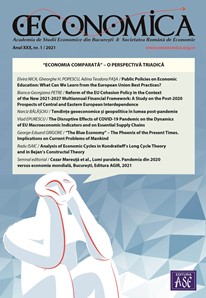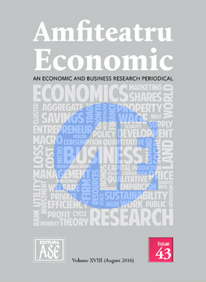Rubrics » UNCOVERstory
Comments on the New Chinese Initiatives and Their Potential Impact on the Sino-Romanian Relations
Since 2012, the new Chinese administration has begun to model the Chinese “going-out strategy” under the characteristics of self-assurance, confidence, leadership and global networking. Initially, the Belt and Road initiative (BRI), announced in autumn 2013 by President Xi Jinping, might have appeared as utopian in the intention of reactivating and extending the Silk Road by land and sea beyond Asia-Pacific, towards Europe, Africa and America. The long-term vision of the BRI is underscored by its first implementation phase, which should be finished until 2049, the year of the 100th anniversary of the People’s Republic of China. More
Romania and China – Friends with No Benefits
When it comes to the relations between Romania and China both parties refer to each other as being “old friends”, invoking a “traditional friendship” that ties the two nations separated by more than 8,000 km. Although Romania was one of the earliest countries to recognize the People’s Republic of China and the relations were close during the 1970s and the 1980s, with China being one of Romania’s strategic trading partners, the 1990s have been a period of mutual disengagement not only concerning Romania, but all the Central and Eastern European countries (hereafter referred as CEEC). Closer ties were reestablished starting with 1998 as China consolidated its position as an important player in the global economy, marking its new phase of development by entering the World Trade Organization in 2001, The CEEC were also in a process of reorientation, gaining security guarantees and new economic perspectives through their piecemeal European and Trans-Atlantic integration. More
What Is the Real Cooperation Between China and the Countries of Southeastern Europe
We have been listening to more and more stories of the New Silk Road (the Belt and Road Initiatives), both in the countries of Eastern and South-Eastern Europe that are approached by this Chinese initiative, as well as in the countries of Western Europe and the United States, which view it with great suspicion. More
The Framework of China’s Cooperation with Central-Eastern Europe: A View from the Baltics
This small material represents an interpretation-based commentary on a particular issue – how a strategically important region for a global actor could clearly determine its role within a sophisticated framework related to a geo-strategic initiative of another global actor. Our discussion revolves around the Baltic States, the EU, China, its Belt and Road Initiative (BRI), and, a direct extension of the latter, the Chinese state’s rapidly developing interconnectedness with a patchy region of sixteen Central and Eastern European countries (the 16+1 Initiative). More
The Usefulness of the Danube Strategy for the 16+1 Mechanism and the Belt and Road Initiative
On the initiative of the People’s Republic of China aimed at intensifying and expanding cooperation with 11 EU member and 5 non-EU member states all in Eastern and South-East Europe the so-called “16+1” mechanism for cooperation was established. It embraces several fields, from investments, transport and finance, to science, education and culture. In the framework of the initiative, China has defined three potential priority areas for economic cooperation: infrastructure, high technologies and green technologies. For ensuring continuous development of the cooperation, a platform of regular meetings was established in 2012. At these meetings, the Chinese Prime Minister meets once a year with the leaders of the 16 countries. Upon the “16+1” mechanism the “Belt and Road Initiative” (BRI) of China got a strong support for realization in Eastern and South-Eastern Europe. More
China's Space Programme – Born Out of National Needs, Poised to Support Global Progress
The 21st century is believed to become the Asian century. In the last few years, China has introduced several economic and political initiatives which promote its rise as a global power. Embedded in its development and rise is the national space programme. Western observers tend to look at China's space programme as being small, slow, technologically less advanced and not significant enough. Is this a correct view of the current reality? Is China's space programme able to support not only national advancement in science and technology but also support global progress? Which role does the New Silk Road project play in this process? Is it possible to predict China’s near-term future in space? The authors, through consulting open source information and performing in-depth analyses, look to find qualified answers to these questions. More
Striving Towards a Consensus
Almost a century ago today, Winston Churchill said that the Balkans produce more history than they can consume. It seems like this has remained unchanged over the years and Albania is no exception. Along with political events and conflicts in Macedonia, Kosovo and Serbia, recent and momentous political developments are taking place in one of the most important countries for the stability of the Western Balkans. More
Bulgaria – Geopolitical Near Future Outlook
Rapid progress in today’s modern world is also generating a significant speed-up of the rate with which social and technological challenges rise up to hinder the peoples of the 21st century. Bulgaria, through its position on the crossroads of the Balkans, has a rather complex geopolitical profile, influenced by neighbouring countries, by EU and NATO and by global and regional powers like Russia, the USA and Turkey. In this context, a multicriteria approach has to be outlined for social, economic and security facets, in order to achieve a more concrete future analysis. More
The Big Misunderstanding with Bulgaria. Why Not Cross The Danube?
It seemed that this motto would best reflect the attitude of many Romanians, diplomats, experts, politicians, regarding the bilateral relations of Romania with her neighbour from across the Danube. For the Romanians, Bulgaria, located so closely, remains a distant land, a great unknown and a mysterious and even exotic place. Regardless, our stake in Bulgaria might turn out to be at least as important for Romania as the bilateral, trilateral, quadrilateral, multilateral formats, strategies, initiatives and partnerships that have been hatched for years in Bucharest by policymakers. More
The Hungarian Government’s Chase of “Foreign Agents”: The Orgy of Hypocrisy
Last month, Hungary made headlines in the international press again by making further steps towards Viktor Orbán’s illiberal dream, which was highlighted three years ago at an event in Băile Tușnad in Romania. Viktor Orbán’s government recently passed a law that enables the authorities to shut down the Central European University – the university established by George Soros, and operating in Hungary for more than two and a half decades. More
Azerbaijan, Armenia and the Eurasian Economic Union: A Risky Game or an Opportunity?
The regional economic integration within the globalized world has been recognized as an important driver for economic growth and job creation. Hence, free trade is one of the essential points for future regional economic development that would lead to a more productive and competitive economic structure. In this respect, the Eurasian Economic Union, which came into force in 2015, aims to establish a single regional market with the elimination of all customs barriers between its Member States. Even though a number of Post-Soviet countries have already become members of the EEU, Azerbaijan has managed to maintain its neutral position in this regard. More
Iran in the South Caucasus – A Keystone to Nagorno-Karabakh?
The Republic of Azerbaijan occupies a key geostrategic position in the region of the South Caucasus. Lying at the geographical crossroads, this country is located on the western shore of the Caspian Sea and controls large reserves of hydrocarbon energy resources in the basin. This geographic location and geoeconomic importance of the area not only creates opportunities, but also generates threats, or at least challenges. More



















